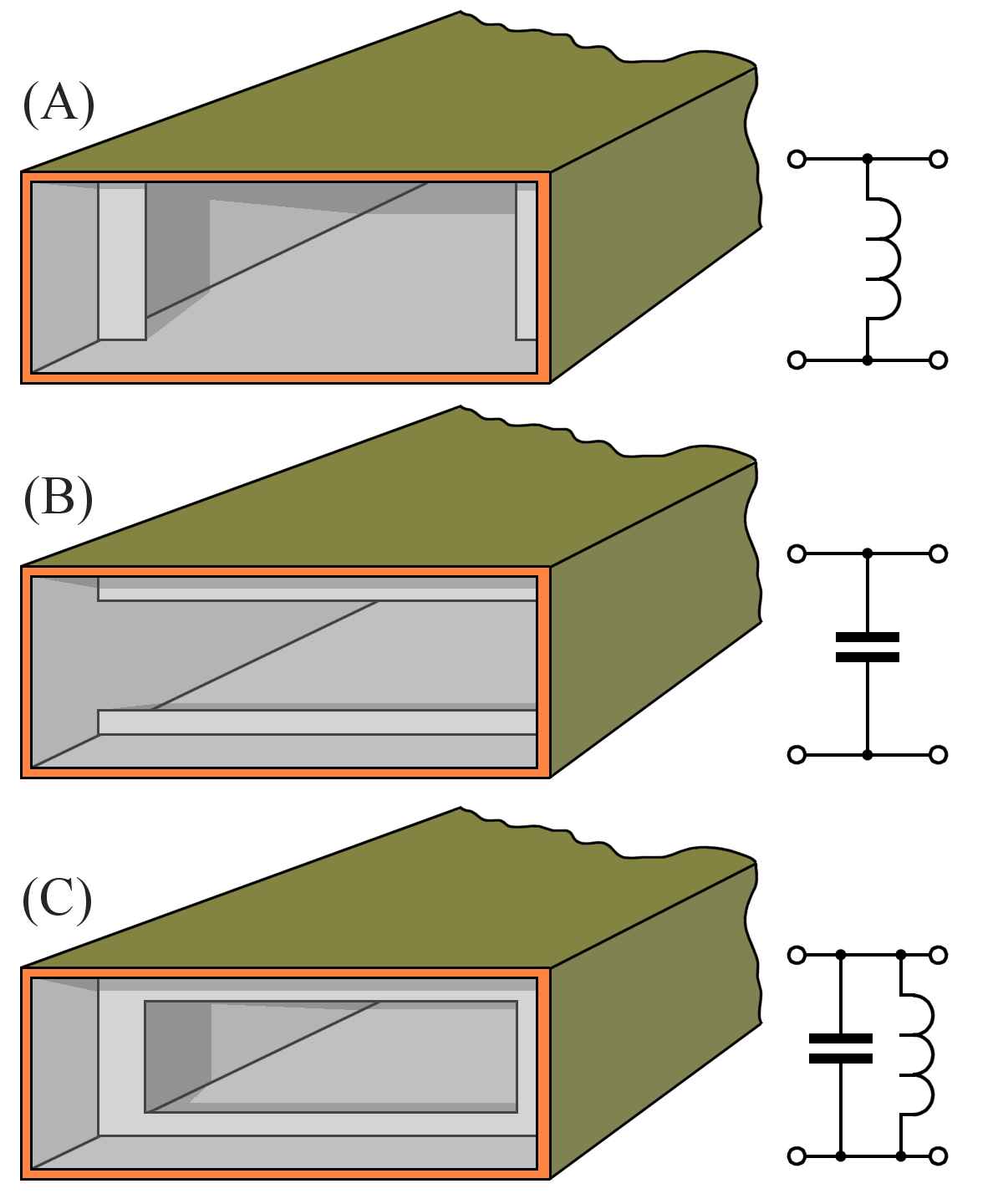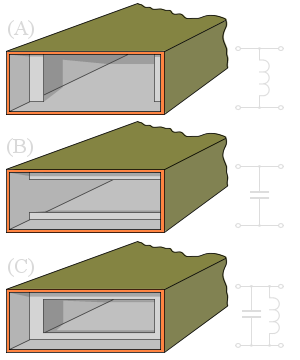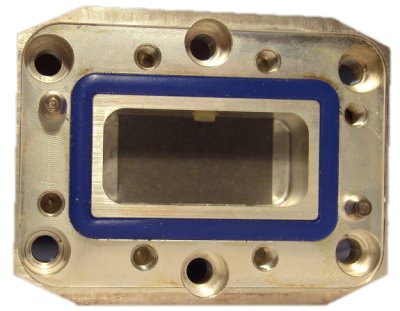Waveguides Impedance Matching

Figure 1: Impedance Matching
Waveguides Impedance Matching
Waveguide/Impedance Matching is often necessary to reduce reflections caused by a mismatch between the waveguide and the load. Matching devices called „Irises” are used to introduce either capacitance or inductance (or a combination of both) into a waveguide.
An inductive iris and its equivalent circuit are illustrated in the figure, view (A). The iris places a shunt inductive reactance across the waveguide that is directly proportional to the size of the opening. Notice that the edges of the inductive iris are perpendicular to the magnetic plane.
The shunt capacitive reactance, illustrated in view (B), basically acts the same way. Again, the reactance is directly proportional to the size of the opening but the edges of the iris are perpendicular to the electric plane.
The iris, illustrated in view (C), has portions across both the magnetic and electric planes and forms an equivalent parallel-LC circuit across the waveguide. At the resonant frequency, the iris acts as a high shunt resistance. Above or below resonance, the iris acts as a capacitive or inductive reactance.
Conductive posts and screws can also be used for impedance matching in waveguides.



